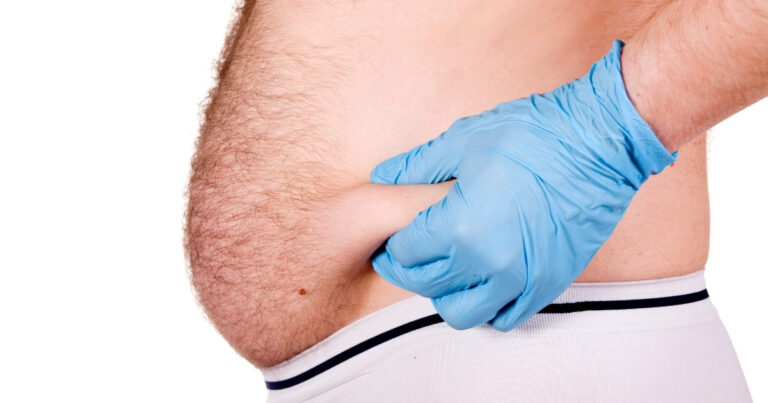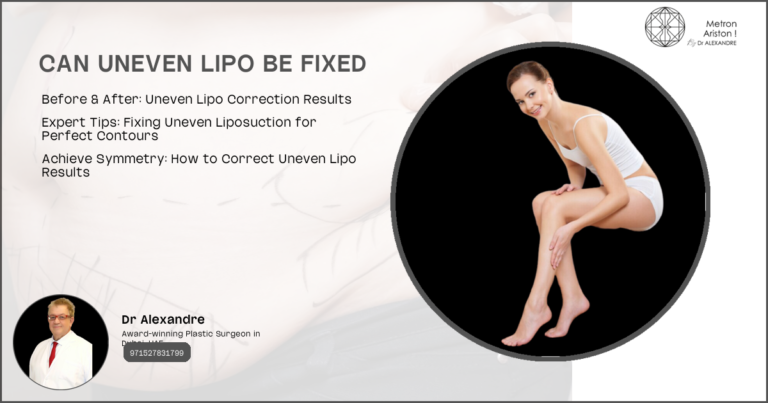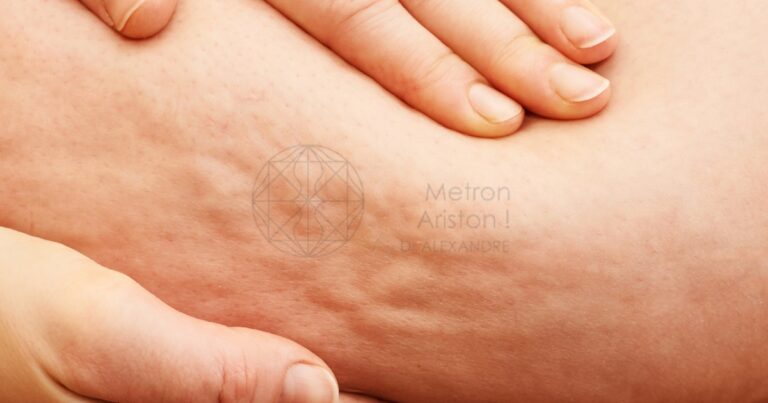Can Liposuction Remove Lipomas? A Comprehensive Guide
Wondering if liposuction can remove lipomas? These benign fatty lumps can be bothersome, especially if they grow in size or number. While traditional surgery is the common approach, some look for less invasive options like liposuction.
But is it effective, and what are the risks involved? Before making a decision, it’s important to understand how different treatments work and which one suits your needs best. Let’s dive into the possibilities and considerations for lipoma removal!
Can liposuction remove lipomas effectively?
Understanding lipomas and their characteristics
Yes, liposuction can be used to remove lipomas—benign fatty tumors that develop under the skin. This minimally invasive technique offers a less scarring alternative to traditional excision surgery, especially for larger or multiple lipomas.
However, not all lipomas are suitable for liposuction, as firmer or deeper ones may require surgical removal.
Lipomas are benign tumors composed of fatty tissue that typically develop just beneath the skin. They are usually soft to the touch, movable, and painless, making them more of a cosmetic concern than a medical one. While lipomas can occur anywhere on the body, they are most commonly found on the neck, shoulders, back, abdomen, arms, and thighs. Understanding the nature of lipomas is crucial for determining the most effective removal method.
- Soft, movable, and painless
- Commonly found on neck, shoulders, back, abdomen, arms, and thighs
- Typically benign and non-cancerous
The potential of liposuction in lipoma removal
Liposuction is a procedure traditionally used for removing excess fat from various parts of the body. However, its potential in removing lipomas has been explored due to its minimally invasive nature. Liposuction can effectively target and remove the fatty tissue that constitutes a lipoma, offering a less invasive alternative to traditional surgical excision. This method can be particularly beneficial for patients with multiple lipomas or those seeking a quicker recovery time.
- Minimally invasive alternative
- Effective for multiple lipomas
- Quicker recovery time compared to traditional surgery
What is liposuction-assisted lipoma removal?
Liposuction-assisted lipoma removal involves using a thin tube called a cannula, which is inserted through small incisions near the lipoma. The cannula is used to break up and suction out the fatty tissue, effectively removing the lipoma.
This procedure is typically performed under local anesthesia, allowing patients to remain awake and comfortable throughout the process. The use of liposuction can result in less scarring and a faster recovery compared to traditional methods.
- Involves a cannula to break up and remove fatty tissue
- Performed under local anesthesia
- Results in less scarring and faster recovery
Benefits of using liposuction for lipoma extraction
The benefits of using liposuction for lipoma extraction are numerous. Firstly, the procedure is less invasive, which means reduced risk of complications and a shorter recovery period. Additionally, liposuction can be used to remove multiple lipomas in one session, making it a convenient option for patients with several growths. The cosmetic results are often superior, with minimal scarring and a smoother skin appearance post-procedure.
- Less invasive with reduced risk of complications
- Can remove multiple lipomas in one session
- Minimal scarring and superior cosmetic results
Are there alternatives to liposuction for lipoma removal?
Traditional surgical excision
Traditional surgical excision involves making an incision over the lipoma and removing it entirely. This method is highly effective and ensures complete removal of the lipoma, reducing the risk of recurrence. However, it is more invasive than liposuction and may result in more noticeable scarring. Surgical excision is often recommended for larger lipomas or those located in areas where liposuction may not be feasible.
- Highly effective with complete removal
- More invasive with potential for noticeable scarring
- Recommended for larger or difficult-to-reach lipomas
Minimally invasive techniques
In addition to liposuction, other minimally invasive techniques for lipoma removal include laser-assisted lipolysis and radiofrequency ablation. These methods use energy-based devices to break down the fatty tissue, which is then absorbed by the body or removed through small incisions. These techniques offer the advantage of minimal scarring and quicker recovery times, similar to liposuction.
- Laser-assisted lipolysis and radiofrequency ablation
- Minimal scarring and quicker recovery
- Suitable for small to medium-sized lipomas
How does liposuction compare to other lipoma removal methods?
Efficacy and success rates
Liposuction is generally effective for removing lipomas, especially when they are small to medium in size. The success rate of liposuction in lipoma removal is comparable to that of traditional surgical excision, with the added benefit of being less invasive. However, the efficacy may vary depending on the size and location of the lipoma, as well as the skill of the practitioner.
- Effective for small to medium-sized lipomas
- Comparable success rate to surgical excision
- Efficacy depends on size, location, and practitioner skill
Recovery time and scarring
One of the main advantages of liposuction over traditional methods is the reduced recovery time. Patients can typically return to their normal activities within a few days, whereas surgical excision may require a longer healing period. Additionally, liposuction results in minimal scarring, making it a preferred option for those concerned about cosmetic outcomes.
- Reduced recovery time compared to surgical excision
- Minimal scarring
- Preferred for cosmetic outcomes
What are the risks and complications of liposuction for lipomas?
Potential side effects
While liposuction is generally safe, there are potential side effects to consider. These may include bruising, swelling, and temporary numbness in the treated area. In rare cases, more serious complications such as infection or damage to surrounding tissues can occur. It is important for patients to discuss these risks with their healthcare provider before undergoing the procedure.
- Bruising, swelling, and temporary numbness
- Rare risk of infection or tissue damage
- Discuss risks with healthcare provider
Factors affecting the outcome
Several factors can influence the outcome of liposuction for lipoma removal. These include the size and location of the lipoma, the patient’s overall health, and the skill of the practitioner performing the procedure. Patients should ensure they choose a qualified and experienced professional to minimize risks and achieve the best possible results.
- Size and location of the lipoma
- Patient’s overall health
- Skill and experience of the practitioner
H2: Who is a good candidate for liposuction-assisted lipoma removal?
Ideal patient profile
Ideal candidates for liposuction-assisted lipoma removal are individuals who are in good overall health and have realistic expectations about the procedure’s outcomes. Candidates should have small to medium-sized lipomas that are not deeply embedded in muscle tissue. Those with multiple lipomas may also benefit from this method due to its ability to address several growths in one session.
- Good overall health and realistic expectations
- Small to medium-sized lipomas
- Suitable for multiple lipomas
Contraindications and precautions
Certain conditions may contraindicate liposuction for lipoma removal. These include bleeding disorders, certain chronic illnesses, and a history of poor wound healing. Patients should disclose their full medical history to their healthcare provider to determine if liposuction is a safe and appropriate option for them.
- Bleeding disorders and chronic illnesses
- History of poor wound healing
- Full medical history disclosure is essential
How long does recovery take after liposuction for lipomas?
Post-procedure care
After liposuction for lipoma removal, patients should follow their healthcare provider’s post-procedure care instructions to ensure optimal healing. This may include wearing compression garments, avoiding strenuous activities, and keeping the incision sites clean and dry. Proper care can help minimize complications and promote faster recovery.
- Wear compression garments
- Avoid strenuous activities
- Keep incision sites clean and dry
Expected timeline for healing
The recovery timeline for liposuction-assisted lipoma removal is generally shorter than that of traditional surgical excision. Most patients can return to their normal activities within a few days, although full healing may take several weeks. Swelling and bruising typically subside within a week or two, and any residual discomfort can be managed with over-the-counter pain medication.
- Return to normal activities within a few days
- Full healing may take several weeks
- Swelling and bruising subside within a week or two
What is the cost of liposuction for lipoma removal?
Factors influencing the price
The cost of liposuction for lipoma removal can vary based on several factors, including the size and number of lipomas, the complexity of the procedure, and the geographic location of the practice. Additionally, the experience and reputation of the practitioner can also influence the price. Patients should obtain a detailed cost estimate during their consultation.
- Size and number of lipomas
- Complexity of the procedure
- Geographic location and practitioner experience
Insurance coverage considerations
Insurance coverage for liposuction-assisted lipoma removal may vary depending on the patient’s insurance plan and the medical necessity of the procedure. In some cases, insurance may cover the cost if the lipoma is causing pain or functional impairment. Patients should check with their insurance provider to determine their coverage options.
- Coverage depends on insurance plan
- May be covered if medically necessary
- Check with insurance provider for options
Can liposuction remove multiple lipomas at once?
Treatment of clustered lipomas
Liposuction is particularly effective for treating clustered lipomas, as it allows for the removal of multiple growths in a single session. This can be a significant advantage for patients with numerous lipomas, reducing the need for multiple procedures and minimizing overall recovery time.
- Effective for clustered lipomas
- Removes multiple growths in one session
- Reduces need for multiple procedures
Limitations and considerations
While liposuction can remove multiple lipomas at once, there are limitations to consider. The total volume of fat that can be safely removed in one session is limited, and larger lipomas may require additional treatment. Patients should discuss their specific case with their healthcare provider to determine the best approach.
- Limited total volume of fat removal
- Larger lipomas may require additional treatment
- Discuss specific case with healthcare provider
H2; How effective is liposuction in removing large lipomas?
Size limitations
Liposuction is generally more effective for small to medium-sized lipomas. Large lipomas may pose a challenge due to their size and depth, potentially requiring a combination of liposuction and traditional surgical excision for complete removal. Patients with large lipomas should consult with their healthcare provider to explore the most effective treatment options.
- More effective for small to medium-sized lipomas
- Large lipomas may require combined treatment
- Consult with healthcare provider for options
Success rates for different lipoma sizes
The success rate of liposuction for lipoma removal varies based on the size of the lipoma. Smaller lipomas tend to have higher success rates with liposuction alone, while larger lipomas may require additional intervention. Patients should have realistic expectations and discuss potential outcomes with their healthcare provider. Chin lipo hydration helps keep your skin smooth after fat removal It involves special treatments to add moisture to your chin area UAE fat removal expenses Getting fat removed in UAE can cost a lot of money depending on what kind of procedure you want and which doctor you choose
Liposuction cellulite impact Liposuction scarring minimal means the surgery leaves very small marks on your skin These tiny marks are hard to see and often fade away over time Liposuction procedure aches After getting liposuction people often feel sore and achy in the areas where fat was removed This discomfort is normal and usually goes away within a few weeks
- Higher success rates for smaller lipomas
- Larger lipomas may need additional intervention
- Discuss potential outcomes with healthcare provider
What are the long-term results of liposuction for lipomas?
Recurrence rates
The recurrence rate of lipomas after liposuction is generally low, especially when the procedure is performed by an experienced practitioner. However, some patients may experience new lipoma growths in different areas over time. Regular follow-up appointments with a healthcare provider can help monitor for any recurrence or new growths.
- Low recurrence rate with experienced practitioner
- Possible new growths in different areas
- Regular follow-up appointments recommended
Patient satisfaction and outcomes
Patient satisfaction with liposuction for lipoma removal is typically high, due to the minimal scarring and quick recovery time. Most patients report positive outcomes and an improved appearance of the treated area. It is important for patients to have realistic expectations and to communicate their goals with their healthcare provider.
- High patient satisfaction
- Positive outcomes and improved appearance
- Realistic expectations and communication are key
FAQ’s
Can lipomas come back after liposuction?
Lipomas can potentially recur after liposuction, although the risk is generally low. Factors such as incomplete removal of the lipoma or genetic predisposition can influence recurrence. Patients should maintain regular follow-up care and discuss any concerns with their healthcare provider to minimize the risk of recurrence.
Is liposuction for lipomas painful?
Liposuction for lipomas is typically performed under local anesthesia, minimizing pain during the procedure. Post-procedure discomfort is usually mild and can be managed with over-the-counter pain medication. Patients often report minimal pain and a quick return to normal activities.
How many lipomas can be removed with liposuction in one session?
The number of lipomas that can be removed with liposuction in one session depends on factors such as the size and location of the lipomas and the patient’s overall health. Dr. Alexandre’s approach involves assessing each patient’s unique situation to determine the safest and most effective treatment.








